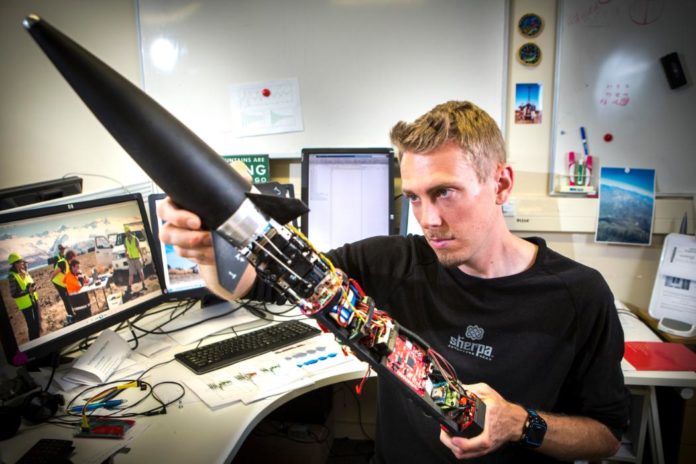 University of Canterbury doctoral student Philipp Sueltrop, in Electrical and Computer Engineering in UC’s College of Engineering, is working to prevent the effects of fuel slosh in rockets using mathematical algorithms, by predicting movement and adjusting the flight movement before fuel slosh becomes a problem.
University of Canterbury doctoral student Philipp Sueltrop, in Electrical and Computer Engineering in UC’s College of Engineering, is working to prevent the effects of fuel slosh in rockets using mathematical algorithms, by predicting movement and adjusting the flight movement before fuel slosh becomes a problem. A noteworthy test of launching rockets is fuel movement inside the tanks impacting the trajectory of rockets through resonance. Substantial mechanical rings inside fuel tanks, called baffles, are the favored answer for hose the slosh of fuel and its consequences for flight trajectory.
University of Canterbury doctoral student Philipp Sueltrop, in Electrical and Computer Engineering in UC’s College of Engineering, is working to prevent the effects of fuel slosh in rockets using mathematical algorithms, by predicting movement and adjusting the flight movement before fuel slosh becomes a problem.
The study offered a new flight strategy that makes it possible for launching rockets into orbit cheaper and more efficient, improving everyday technology like mobile phones and Global Positioning Systems (GPS).
Using a vertical wind tunnel, Sueltrop observed slosh and rocket motion behaviors. Gathering the data for precisely detecting fuel slosh under different movements, Philipp will ‘on board’ the algorithm into the flight control computer.
At that stage, real-life launches will be utilized to assemble information and record how the algorithm could impact the flight strategy and contrast these discoveries with what was seen amid testing in the wind tunnel to demonstrate the effectiveness of the algorithm. If successful, this could lessen or totally expel the requirement for baffles in fuel tanks.
Philipp Sueltrop said, “It’s about performing the right movement at the right time.”
“Making the move into real flight means fully converting the algorithm into a flight version that takes into account elements, including acceleration, that is not present in the wind tunnel. The algorithm is very flexible and easily scalable.”
Chris Hann who developed the foundation for algorithm said, “The underlying mathematics were first developed for glucose control and cardiovascular management in the Christchurch Intensive Care Unit. It was then transferred to the field of rocketry. The analogy is that insulin is used to control glucose wherein a rocket you have canards which control the direction of the rocket.”
“Philipp’s research has direct application to provide better control of liquid fuel orbital rockets including removing the need for heavy baffles and allowing launches in a greater range of weather conditions. It also has application for ship-to-ship docking in the ocean and potentially developing better control systems that handle sea-ice interactions for ships in polar regions.”












No comments:
We have Zero Tolerance to Spam. Chessy Comments and Comments with Links will be deleted immediately upon our review.
Post a Comment